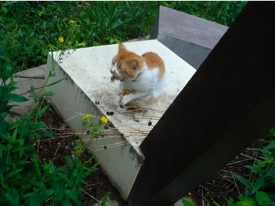Why are we doing this?
Biology 367 Project
With the help of thousands of Edmontonian ‘Citizen Scientists,’ Dr. Erin Bayne, Corey Scobie, and the class of Biology 367 (fall 2010) are working to improve our understanding of how many birds are killed in the Greater Edmonton Area near our homes and what we can do to prevent it.
Students and instructors created pamphlets to raise awareness about urban bird conservation. These pamphlets were delivered to more than 7,000 Edmonton homes and were sent by email to many more citzens of the greater Edmonton area. Participants are asked to fill out a short online survey to quantify the number of birds that have been killed by collisons with windows and other factors. To learn how to improve the safety of the Edmonton area for birds, the survey also collects information about the urban bird habitat created by yards.
What if no birds have been killed in my yard?
It is important to collect information about yards that have not had birds killed in them. This way, we can start to understand what it is about the landscapes we create in our own yards that cause bird mortality - and also what it is about our yards that can reduce bird deaths.Once we know what yard characteristics reduce bird deaths, we can start to implement changes that will make our city a healthier and happier place for all of its residents.
Are bird window strikes really a problem?
Between 100 million and 1 billion birds are killed every year crashing into residential homes and commercial buildings (Klem 1990). In a study conducted by Dunn (1993), bird deaths from window collisions ranged from zero to 33 in one year! There are many factors that influence mortality from collisions.
Many of these factors influencing the likelihood a bird will have a fatal collision with a window can be controlled by human actions. To find out more information about what factors affect bird window collisions and what you can do to help, click on this link:
